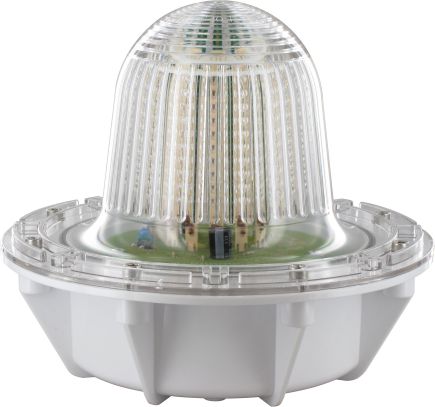
Aviation signal lights are of extreme importance, to ensure the safety of passengers, pilots, as well as cargo. Through the increasing use of LEDs or light-emitting diodes, lighting technologies have shown great improvement, whereas in the latter years, less efficient and unreliable incandescent lamps were utilized.
Some of the attributes that aviation signal lights today improve include their colour, life, and electrical characteristics.
Aviation Signal Lighting And Its Role
Aviation signal lighting, or aircraft warning lights, are characterised as high-intensity illuminating devices that are mounted to tall structures. These devices work as a collision avoidance measure, allowing possible accidents causing structures to be visible for pilots.
Aviation signal lightings are usually used at night time, but they can also be used during the day. In order to provide visibility over tall structures in a dark environment, these devices need to have sufficient brightness, as well as being visible from afar in all directions of the structure.
Aircraft
In order to alert other aircraft of their proximity, aircraft employ collision avoidance lighting systems. These signalling lights include landing lights, flashing beacons in red or white colour, wingtip navigation lights, and wingtip strobes.
A red light on the left wingtip and a green light on the right wingtip are required for the wingtip navigation lights. Landing lights are used during descent and landing approach, and on other occasions, if the flight crew or operator finds it appropriate.
Aircraft warning lights or aviation signal lighting comes with heavy responsibility in terms of aviation safety. For this reason, they have to be mounted carefully and properly to benefit from the visibility they provide.
These safety measure devices must be capable of providing sufficient lighting to be effective, not only at night time. Low light conditions can also happen during the day, such as cloudy weather conditions, which also requires aircraft to use aviation signal lighting.
Mounting Aviation Signal Lights
Generally, such lights can be seen connected to an elevated structure such as broadcast masts and towers, electricity pylons, high elevation water tanks, high buildings, chimneys, cranes and wind turbines. Lighting may also be needed for smaller structures located near airports; an example of this is the 2013 constructed south scoreboard at Lambeau Field in Green Bay, Wisconsin. It is the highest structure in the nearby Austin Straubel International Airport’s general area.
The ICAO or International Civil Aviation Organization sets the standards for the reliability and characteristics of aviation warning lights. These standards are generally adopted worldwide.
Lights are typically positioned at different heights on the tower in groups of two or more around the building. There will often be set at the end, and then one or more sets spaced up the structure equally. The Belmont Transmitting Station in Lincolnshire has nine clusters of red lights evenly spaced along with the mast’s full height.
Final Say
Aviation signal lighting plays an important role in terms of keeping all passengers, pilots, and cargo of an aircraft safe and secure during flights. Aside from that, it also provides better visibility on tall structures to prevent a collision.
